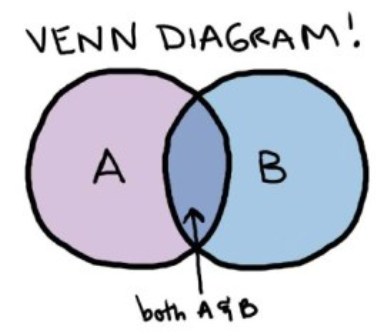Dewey 21C: September 2010 Archives
There's a reason for this, I think, and it's because video production isn't cheap and there's pressure to promote your own work. Moreover, showing process is a pretty tricky thing. Without the process, well, there's no reference point for what you are really talking about. Too much process, and you risk pushing your audience away.
Here's a wonderful video from the Seattle Arts Education Consortium. It succeeds in giving a good sense of exactly what arts education looks like in a classroom, with lots of footage involving kids and teachers. And, it's got some excellent context and even a few talking heads!
How effective this piece is on a practical basis is another question, that can only be answered by what the producers hoped to achieve with it.
What are the stereotypes in education films today? Is it the image of kids in uniforms? Is it the reassurance that someone gets from viewing kids seated at desks taking tests, followed by a caption that shows the increased test scores?
Perhaps it won't be long before the films are created that show the good teachers getting bonuses and the bad teachers getting the proverbial boot, followed by some sort of approbation, such as a smiling mayor or governor giving the thumbs up.
The search for the best media about arts education tend to suffer from the same problems as the search for the right message.
I would like to think that this video is a good place for us to move forward from.
Powerful Learning Through The Arts from Brian Quist on Vimeo.
That being said, I am very happy to support choice when it comes to education. And to help illustrate that, here's a video of Diane Ravitch, which is my way of helping to make sure you have a choice of opinions to choose from about K-12 education in America. It comes from a September 24th address to the United Teachers of Los Angeles.
Give this a listen, not only to support choice, but for something arts education supporters should be thrilled over: Diane is one of the rare education policy experts that talks about arts education!
Heeeere's Diane!
I am preparing an overview blog on the Common Core standards, that will look at why, how, when, and potential impact for arts education. That's on the worktable, so to speak.
As for Waiting for Superman, rather than blog on the movie, oddly enough, I suggest you click on over to the NY Times and read this article about advancing from bubble tests.
By shifting our assessment techniques, we would learn more of what we really need to know about how children, teachers and schools are doing. And testing could be returned to its rightful place as one tool among many for improving schools, rather than serving as a weapon that degrades the experience for teachers and students alike.And, click on through too, to the Letters to the Editor, published today, for a bit of complement.
And, because I never know when to shut up, here are four links I would urge you to click through for some interesting perspectives about Waiting for Superman. And as for my blog on the subject, don't expect a rave for something that I have a tend to view as being less than productive.
Aaron Pallas/Gothamschools.org, An Inconvenient Truthiness
Flypaper/Fordham Institute, Cracking the Code or Ed Reformers on Crack?
Diane Ravitch/Ed Week, Why Michelle Rhee and Adrian Fenty Lost
Dana Goldstein/The Nation, Grading Waiting for Superman
Anthony Cody/Ed Week, OprahPaganda
Hummm....maybe I don't need to write anything after all!
************************************************************************************************************
A couple of years ago I was attending a conference on arts education,convened by the United States Department of Education for its AEMDD and Professional Development grantees. One of the panel sessions involved arts education and trauma. In this particular case there were two presentations, one by Echo Olander, Executive Director of Kidsmart in New Orleans; the other by Carol Fineberg about the School Arts Rescue Initiative of the New York Times Company Foundation.
In a nutshell, the presentations looked at the positive role arts education played in the lives of children who had suffered significant trauma. Echo focused on Hurricane Katrina; Carol, on 9/11.
It was a remarkable presentation, that sadly enough was not all that well attended. Most attendees apparently preferred to attend more traditional presentation on instructional issues.
What became abundantly clear was that the arts provided a wide-range of vitally important experiences and pathways for students, teachers, parents, and medical professionals.
There were the psychologists and social workers who used the arts to help diagnose and connect to children.
There were the children who could not be adequately understood except through paintings, drawings, theater games, etc.
There was the role the arts played in providing a a form of therapy to help the children comprehend and process what had happened to their lives and world around them, and of course, the complex and difficult set of emotions and cognitive challenges they were dealing with.
There was the simple beauty and kindness that the gift of the arts provided for each child, helping them to see that someone cared for and about them.
And, I only wish I had the skills to adequately describe how obvious it was to everyone involved that the arts played an absolutely crucial role in all of this supporting these children and moving them forward through the trauma they had experienced.
In essence, the arts played a fundamental role, understood well by those charged to support these children.
As I was listening and watching on screen presentations (film, photography, etc.), I started to think that the core of what we being presented here was basically why I was in this field. It struck a very deep and profound chord as to what I believe the arts can bring to the table and why every child is entitled to a quality arts education as a human right.
That's correct, no hyperbole: a human right.
Let me elaborate.
The arts are often denied those who are deemed to be in need of remediation. For those students in schools not making adequate progress (annual yearly progress, in NCLB terms), for those students in generally low performing schools, for those students in who are over age, or at risk of dropping out, or at risk of being left back, the arts are often denied in favor of extra work in reading and math.
But let's think about it for a second. Must one suffer a cataclysmic event, a Hurricane Katrina or 9/11 to experience something traumatic? Are the wonderful pathways provided by Olander and Fineberg's efforts only for those who have been subject to some sort of cataclysm?
How many children experience trauma through more ordinary events: divorce, death of a parent or sibling, poverty, bullying, mental illness, abuse, etc?.
I would argue that these children, in fact, all children need the pathways that they arts can provide, and they need it on the basis of what is fundamental and purely basic. Thus, it is a human right.
And you have to wonder, for while we may not have the scientific proof that more arts education will increase graduation rates, if you consider the above, denying the arts to kids at risk, should strike many as a very, very bad way to go about educating our children.
A year ago, Cerebrum, published Michael Posner and Nancy Patoine's How Arts Training Improves Attention and Cognition.
If there were a surefire way to improve your brain, would you try it? Judging by the abundance of products, programs and pills that claim to offer "cognitive enhancement," many people are lining up for just such quick brain fixes. Recent research offers a possibility with much better, science-based support: that focused training in any of the arts--such as music, dance or theater--strengthens the brain's attention system, which in turn can improve cognition more generally. Furthermore, this strengthening likely helps explain the effects of arts training on the brain and cognitive performance that have been reported in several scientific studies, such as those presented in May 2009 at a neuroeducation summit at Johns Hopkins University.For those of you who think that arts education isn't brain surgery, well you're right: it's brain research.
Now don't get me wrong, I am not overselling the article, as it's not our silver bullet. But, it's a very interesting piece about work I believe is highly promising, and it's written in a fairly accessible style for those who avoid scientific text. It's got some good overall context and presents the challenge:
Taken as a whole, the findings to date tell us that music training can indeed change brain circuitry and, in at least some circumstances, can improve general cognition. But they leave unsettled the question of under what circumstances training in one cognitive area reliably transfers to improvements in other cognitive skills. From our perspective, the key to transfer is diligence: Practicing for long periods of time and in an absorbed way can cause changes in more than the specific brain network related to the skill. Sustained focus can also produce stronger and more efficient attention networks, and these key networks in turn affect cognitive skills more generally.I wonder if such research will ultimately provide the silver bullet for arts education rationale. There is something new and promising, based on scientific rigor, coming from researchers at places like Johns Hopkins, that hold the promise of establishing a new narrative as to why arts education.
Why don't you give it a read to see what you think?


Is this a perfect example, nope. Are there any? Hummm...I will get back to you on that.
Click on through to Georgia Plans to Require Science as Measure of AYP, from the Curriculum Matters blog on Ed Week.
A few things to bear in mind:
1. Even science has suffered as a result of curriculum narrowing. As much as it burns me to see the arts left out of initiatives such as STEM, I have a pretty good understanding how science learning has suffered in the US, primarily through what I have learned from my friend and colleague Joy Hakim. That reminds me, Joy gave me consent to publish some of her writings on how the text book industry has held science education back. For an entry in the near future.
2. As a corollary to item one, it's a good time to give ourselves a break, for if science has had such a hard time, it just goes to show what a tough business it is to advance arts education.
3. I don't know if anyone wants to see that arts become part of Annual Yearly Progress as defined by NCLB. That being said, making the arts part of accountability, as is being done here for science, would be a breaking through of one very big roadblock.
"The rationale for this strategy is two-fold: First, student interest in and preparation for science in high school must begin at the elementary level. Unfortunately, teachers and principals often de-emphasize science, partly because of the strong focus on reading and mathematics, where distinct accountability consequences are in place, and partly because many elementary and middle school teachers lack strong content knowledge in the sciences. Second, since what is measured matters, requiring science as a second AYP indicator will put an instructional focus on teaching and learning the subject."
The application emphasizes, however, that it's not simply issuing a new requirement for science. This step will be accompanied by professional development for teachers and other related efforts.
That's it. There you have it. That's the first roadblock pulled out of a hat to rationalize "why not."
 I have heard this particular roadblock deployed many times, including in response to the advocacy for a special form of assistance to help schools without any certified arts teachers locate and hire these teachers. We were we told: "if we did that, we would have to do it for every subject."
I have heard this particular roadblock deployed many times, including in response to the advocacy for a special form of assistance to help schools without any certified arts teachers locate and hire these teachers. We were we told: "if we did that, we would have to do it for every subject."I have even heard this presented in regards to calls for restoration of previously existing funding lines.
It presents a great challenge for any advocate, and in some respects it's the sort of thing that must be dealt with successfully in order for arts education to advance. In other words, how does one advocate successfully with the policy makers, when they tell you something you know is not quite true.
So, you may wonder how I could take issue with that particular roadblock? What's false about it? Well, I would propose that based upon experience and observation, that this particular argument is sophistry. It's the presentation of a specious argument in order to deflect or deter.
Let's look at the STEM initiatives as a frame of reference. Something special for Science, Technlogy, Engineering, and Math, don't you think? Were those proposing STEM initiatives told it couldn't be done, for it would have to be done for all the other subjects? Let's face it, STEM is deeply embedded with Race to the Top. It was an engine within Race to the Top. Did anyone tell the USDOE or the state applicants you can't do that?
And as an aside, there's a lesson here too, about STEM, the arts, and the desire to create STEAM. Many people feel that there is promise in adding the arts to STEM. It's a good idea, and I support it. You read editorials, you hear about some initiatives. My take as to likelihood: the STEM express has very likely left the Race to the Top station and the arts didn't have a ticket. STEM didn't just happen overnight. We were very late to the table, and late to join forces with the successful advocates such as The STEM Education Coalition.
Okay, I digress.
How about the Common Core standards? Did anyone mention to the National Governor's Association and the Chief Council of State School Officers that you couldn't do this for ELA and Math, if you didn't for all the other subjects? And wait, it's more than simply the standards. It's a also a giant national initiative as part of Race to the Top, to develop the next generation performance-based assessment for the standards. It's all a web of policy and eventual practice, that many see is the entire web of education policy and practice, and it is based upon two subjects: ELA and math.
Okay, let's look at another example: providing incentives for the hiring of teachers in high need areas. If you can do it for math, shouldn't you be able to do it for the arts?
I could go on, and on, and on, but the point should be well taken by now.
Is there a teachable moment for this field, in light of what I am blathering about?
Personally, the issue exists as a microcosm for what holds our work back. The strategies, tactics, and identity that will enable us to successfully overcome this particular roadblock are key to the success in advocacy within the field of arts education, and possibly the arts overall.
Are we there yet? No. But spending time thinking through how to break through is a good part of what we need to be working on.

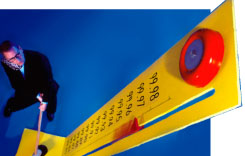 The Beaverton School District and Young Audiences Arts for Learning have completed raising the required match to secure its i3 grant from the USDOE.
The Beaverton School District and Young Audiences Arts for Learning have completed raising the required match to secure its i3 grant from the USDOE.The school district and partners had approximately 21 days to raise the required $800,000, not a small sum for a relatively small school district, in this economy no less.
Bravo!
Test prep isn't instruction. In virtually every school I have gone into in recent years, teachers complained about instructional time lost to prepping students for tests. Art and music fell by the wayside years ago in most schools, but many schools were also shortchanging key subjects like history and science - because reading and math tests were the only ones that counted.
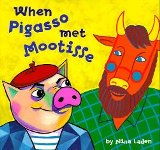
When Pigasso Met Mootisse
The book cover tells you all you want to know. A lovely and fun book. I stand self-corrected: A great children's book.My sister Linda and her son Ian, gave this book to my daughter Sophie. Linda is a veteran arts teacher in a Brooklyn public school.

What Charile Heard: The Story of American Composer Charles Ives
An inspired book, one that was given to me as a gift by The American Composers Orchestra (on whose board I sit) upon the birth of my daughter. It's a detailed and touching story of the extraordinary life of the the father of experimental music in America.

This Land is Your Land
Another absolutely stunning book, that is equal parts title song and bits and pieces of the life and legacy of Woody Guthrie. And of course, the book retains the original lyrics. Nothing censored. So, if you're one of those folks with an axe to grind about arts and social justice, this book is not for you.
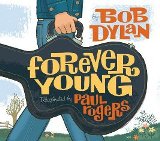
Forever Young
Hey Bob Dylan fans!

Man Gave Names to All The Animals
Hey again, Bob Dylan fans!
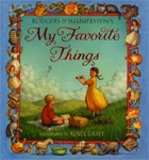
My Favorite Things
Take R&H classics and combine them with sweet illustrations by Renee Graef. Sounds like a nice arts integration project.
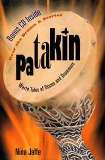
Patakin--World Tales of Drums and Drummers
My dear friend Nina Jaffe has written this wonderful book that should be on the shelves of every art loving parent and child, everywhere! Once upon a time, I thought this book could be the basis for a children's drumming movement. I still do. Ask Nina, she will tell you about my vision of drum sets and refrigerator magnets for kids. And, don't forget to check out Nina's series of children's books based upon Wonder Woman!
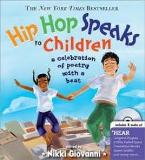
Hip Hop Speaks to Children with CD: A Celebration of Poetry with a Beat
A great entry point for contemporary poetry for kids. Beautifully illustrated with a beat you can dance to, as they used to say on American Bandstand.
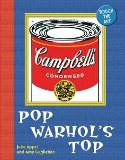
Touch the Art: Pop Warhol's Top
I just love this book, one that is particularly good with the youngest of the younger generation. And, it's not just Warhol, not that there's anything wrong with that.
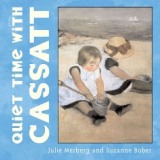
Quiet Time with Cassatt
This book is beautifully put together. A very sweet and thoughtful approach. And, the reproductions are surprisingly good.
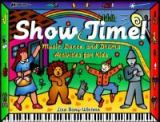
Show Time: Music, Dance, and Drama Activities for Kids
Why wait?

The Butterfly Dance
This books is a captivating story of a Rabbit that travels to perform the traditional Butterfly Dance. A beautiful entry into the Hopi Culture.
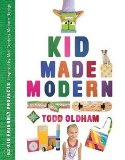
Kid Made Modern
Crafts and Modern Art, presented to you by Todd Oldham. Brilliant.
For better or worse, the recent economic crisis has changed the way some funders are thinking about their support for advocacy and direct services, providing a more nuanced view of how these strategies can be complementary.
Ultimately, it's incumbent upon funders to be clear about what they want to accomplish, identify grantees that share those goals, and provide funding that enables those grantees to adapt their work to best achieve them. Advocacy and direct services, when merged thoughtfully and strategically, can accomplish more than either approach would be able to independently achieve. I'd encourage funders to revisit their grantmaking with an eye towards how they can build on their current work with a combination of these strategies.
